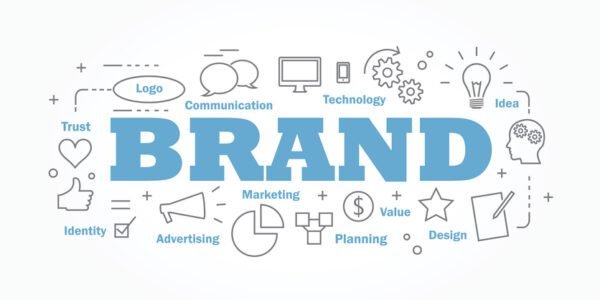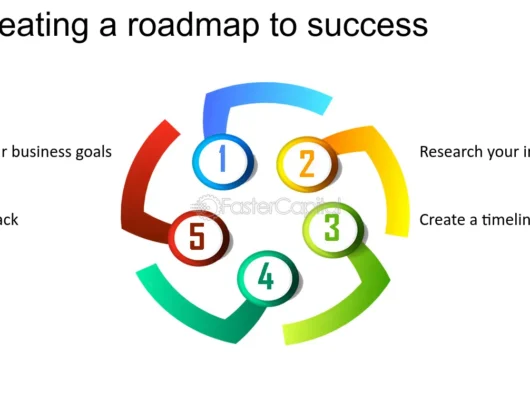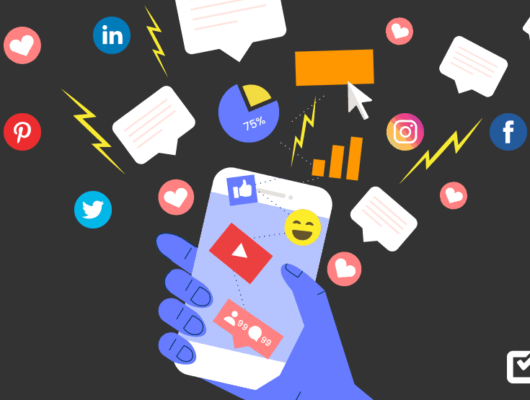In today’s competitive market, branding is more important than ever. It’s not just about having a logo or a catchy slogan; it’s about creating a comprehensive visual and emotional experience that resonates with your audience.
Branding design plays a crucial role in this process, helping to shape perceptions, build trust, and create lasting connections with customers.
This article delves into the importance of branding design, the key elements involved, and how to create a strong, cohesive brand identity.
What Is Branding Design?
Branding design refers to the visual and strategic elements that define a brand’s identity. This includes the logo, color palette, typography, imagery, and overall aesthetic that represent the brand. However, branding design goes beyond visuals—it encompasses the tone, voice, and personality of the brand, all working together to create a consistent and recognizable identity.
Why Branding Design Matters
1. Establishes Brand Identity
Branding design is the foundation of your brand’s identity. It communicates who you are, what you stand for, and what customers can expect from your products or services. A well-defined brand identity differentiates you from competitors and helps establish a clear and compelling narrative that resonates with your target audience.
2. Creates Emotional Connections
People connect with brands on an emotional level. A strong branding design evokes feelings, memories, and associations that can drive customer loyalty. Whether it’s the warmth of your color palette, the playfulness of your logo, or the reliability conveyed through your typography, branding design helps shape the emotional experiences customers have with your brand.
3. Enhances Brand Recognition
Consistent branding design makes your brand more recognizable. When customers see your logo, color scheme, or any other visual element of your brand, they should immediately associate it with your company. This recognition builds over time, making it easier for customers to remember and choose your brand over others.
4. Builds Trust and Credibility
A cohesive and professional branding design signals to customers that your brand is trustworthy and credible. It shows that you’ve invested in your identity, which can increase customer confidence in your products or services. Consistency across all brand touchpoints—from your website to packaging—reinforces this trust.
5. Supports Marketing and Advertising Efforts
Effective branding design enhances your marketing and advertising campaigns. Whether it’s through eye-catching visuals, memorable slogans, or compelling narratives, strong branding design ensures that your campaigns are aligned with your brand identity and resonate with your target audience.
Key Elements of Branding Design
1. Logo Design
The logo is the most recognizable element of your brand identity. It should be simple, memorable, and reflective of your brand’s values and mission. A well-designed logo is versatile and can be used across various mediums, from digital platforms to print materials.
2. Color Palette
Colors evoke emotions and set the tone for your brand. A carefully selected color palette helps convey your brand’s personality and makes your brand more memorable. It’s important to choose colors that align with your brand’s values and appeal to your target audience.
3. Typography
Typography is more than just selecting a font—it’s about choosing typefaces that complement your brand’s personality. Whether you opt for a modern sans-serif font or a classic serif, your typography should be legible, versatile, and consistent across all brand materials.
4. Imagery and Graphics
The images and graphics you use should support and enhance your brand’s identity. This includes everything from photography style to iconography and illustrations. Consistent use of imagery that aligns with your brand’s values and aesthetics helps create a cohesive and professional look.
5. Brand Voice and Tone
While not a visual element, your brand’s voice and tone are integral to branding design. The way you communicate with your audience—whether it’s through copy on your website, social media posts, or customer service interactions—should reflect your brand’s personality. A consistent voice helps build a strong connection with your audience.
6. Packaging Design
For product-based businesses, packaging design is a crucial aspect of branding. Your packaging is often the first physical interaction a customer has with your brand, so it should reflect your brand identity while being functional and attractive. Effective packaging design can enhance the perceived value of your product and encourage repeat purchases.
7. Web and Digital Design
In today’s digital age, your website and online presence are key components of your branding design. Your website should be user-friendly, visually appealing, and consistent with your overall brand identity. This includes the design of your website, social media profiles, and digital advertisements.
The Branding Design Process
1. Research and Strategy
The first step in the branding design process is understanding your brand’s mission, values, target audience, and competitive landscape. This involves market research, competitor analysis, and defining your brand’s unique selling proposition (USP). A clear strategy is essential for guiding the design process and ensuring that your brand’s identity aligns with your business goals.
2. Concept Development
Based on the research and strategy, the designer will develop various concepts for your brand’s visual identity. This stage involves brainstorming and exploring different ideas, styles, and elements that could represent your brand. The goal is to create a range of options that can be refined and developed further.
3. Design and Refinement
Once initial concepts are developed, the designer will create digital versions and refine the selected design. This includes experimenting with different color schemes, typography, and layouts to find the best representation of your brand. Feedback from stakeholders is incorporated to ensure the design aligns with your brand’s vision.
4. Implementation
After finalizing the design, the next step is implementing it across all brand touchpoints. This includes updating your logo, website, social media profiles, packaging, marketing materials, and any other branded assets. Consistency is key to ensuring that your brand identity is cohesive and recognizable.
5. Brand Guidelines
Creating brand guidelines is an essential part of the branding design process. These guidelines outline how your brand elements should be used across different mediums, ensuring consistency in your branding. They typically include rules for logo usage, color palette, typography, imagery, and tone of voice.
Common Branding Design Mistakes to Avoid
1. Inconsistency
One of the biggest mistakes in branding design is inconsistency. Inconsistent use of logos, colors, fonts, or messaging can confuse customers and weaken your brand’s identity. It’s essential to maintain consistency across all brand touchpoints to build recognition and trust.
2. Overcomplicating the Design
Simplicity is key in branding design. Overcomplicating your design with too many elements, colors, or fonts can make your brand look cluttered and unprofessional. Focus on creating a clean, simple design that effectively communicates your brand’s message.
3. Ignoring the Target Audience
Your branding design should resonate with your target audience. Ignoring their preferences, values, or cultural context can result in a brand identity that doesn’t connect with the people you’re trying to reach. Always consider your audience when developing your brand identity.
4. Following Trends Too Closely
While it’s important to stay current, following design trends too closely can result in a brand identity that quickly becomes outdated. Instead, focus on creating a timeless design that will remain relevant and effective over the long term.
Conclusion
Branding design is a critical component of building a strong and memorable brand identity. By focusing on key elements like logo design, color palette, typography, and brand voice, you can create a cohesive and compelling brand experience that resonates with your audience.
Whether you’re launching a new brand or rebranding an existing one, investing in professional branding design is essential for establishing a clear, consistent, and recognizable identity that drives long-term success.






